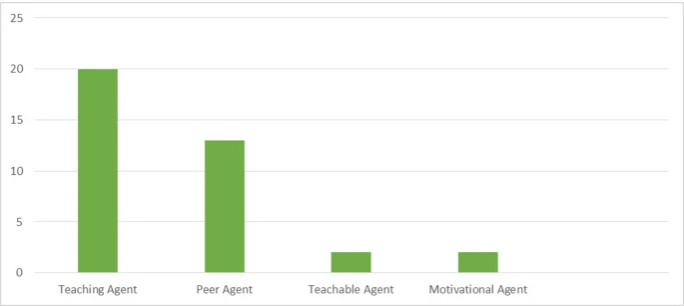Post #6 | Collaborative Learning: Where does AI fit in?
- Sarah

- Feb 3, 2023
- 4 min read
Updated: Feb 18, 2023
What is collaboration and is AI capable of collaborating with learners in education?

After exploring artificial intelligence (AI) – specifically chat bots like Chat GPT – and its role in education (advantages, disadvantages and considerations), I’ve begun to reflect on one of the specific aspects of my Big Question: Collaboration.
What is Collaboration?
According to the Merriam Webster dictionary, collaboration involves “working jointly with others or together especially in an intellectual endeavour” and requires working cooperatively (Merriam-Webster, n.d.).
What is Collaborative Learning?
More specifically, Smith & Macgregor (n.d.) refer to collaborativelearning as “an umbrella term for a variety of educational approaches involving joint intellectual effort by students, or students and teacher together” (p. 1). It involves working together to search for understanding or to create something (Smith & Macgregor, n.d.). Collaborative learning shifts away from the teacher being the keeper of knowledge, and more as the designer or guide to engage learners in intellectual experiences (Smith & Macgregor, n.d.). In the classroom, collaborative learning often assists learners acquire knowledge, engage students in an active way, practice communication and teamwork skills, and provide opportunities to support to one another (Artificial Intelligence, n.d).
So, can AI machines collaborate?
There is limited research on collaboration with AI bots merely because it is so new. However, there are many articles outlining the potential of collaborating with AI bots, and comparisons to the benefits of implementing machines. Regardless if it still too early to compare and contrast the AI chat bot experience to collaborating with peers and colleagues, I intend to explore this using predictions, personal experience, and based on conversations with colleagues and students.
Wang & Liu (2021) discuss how innovative AI applications already emphasize methods that encourage deep-learning (i.e. inquiry, cooperation, problem-based learning). So, since there are applications that already have the power to foster these styles of respected learning methods, it might just be possible that AI chat bots quickly learn how to incorporate these learning pedagogies and communication methods into their programming to promote collaborative learning in the classroom. If the teacher adapts their teaching methods to foster a classroom based on inquiry, critical thinking, problem-based learning, AI chat bots may actually enhance the learning experience!
The Many Different Types of AI Chat Bots
AI as chatbots, A.K.A “conversational agents”, have been around for a while now – the recent development of Chat GPT just took the world by storm due to its vast improvements and capabilities (Kuhail et al., 2023). Since chatbots are becoming smarter in their abilities to communicate as “humans”, their collaboration capacity has increased.
It's important to understand there are one-way and two-way driven chatbots (Kuhail et al., 2023).
One-Way chatbots: use machine-learning to understand the user and select responses from pre-composed answers.
Two-way chatbots: generate responses word-by-word to users and responses are not pre-made. They learn from experience and improve over time (i.e. Chat GPT) (Kuhail et al., 2023).
It’s clear that to engage in collaboration with AI chat bots, a two-way experience is preferred in order to personalize and differentiate learning. AS the student learns, the AI should improve with them. On top of their systems, Ai chatbots can be based on text, voice or are embodied (a robot).
"Collaborating" with AI Chatbots
There are many different ways learners can engage with Ai chatbots. Kuhail et al. (2023) outline four different ways that Ai chatbots can engage and interact with learners:
· Teaching agents
· Peer agents
· Teachable agents
· Motivational agent
Currently, AI chatbots are most commonly used as teaching agents.

(Kuhail et al., 2023)
AI Chatbots as…
Teaching Agents
Offer tutor-style assistance
Recommend tutorials to students based on learning styles
Discuss educational videos after students viewed them
Pose reflective learning opportunities
Conduct formative assessment (multiple choice questions)
Provide feedback to students
Offer story-telling
(Kuhail et al., 2023)
Peer Agents
Offer support on demand 24/7
Provide scaffolded group discussions
Offer conversation opportunities to learn languages
(Kuhail et al., 2023)
Teachable agents
Require students to provide step-by-step solutions
Ask students prompting questions or questions to solve
(Kuhail et al., 2023)
Motivational Agents
Offer reactions to student responses
Offer encouragement, approval or empathy to motivate students
(Kuhail et al., 2023)
Although AI Chatbots used in collaboration with student learning as more often “teaching agents”, I do believe that two-way chatbots will become so advanced that they will more often be able to hold conversations with students. This begs the question – will students find better conversational relationships with their AI systems? It makes me think about the movie “Her”….
Until AI chatbots can effectively learn their users, understand empathy and emotions, pick up on contextual clues, and engage in authentic conversations and build some sort of "cooperative relationship" with users, I’m not sure we’re ready for “collaboration” as we know it. However, based on the definition of collaboration, we already work hand-in-hand with technology to inquire, explore, discover and problem-solve. So, some may argue we already use AI in collaborative learning.
What do you think?
References:
Artificial Intelligence: Collaborative Learning in the classroom. (n.d.). Frontiers. https://www.frontiersin.org/research-topics/47929/artificial-intelligence-collaborative-learning-in-the-classroom
Kuhail, M.A., Alturki, N., Alramlawi, S. et al. Interacting with educational chatbots: A systematic review. Educ Inf Technol 28, 973–1018 (2023). https://doi.org/10.1007/s10639-022-11177-3
Merriam-Webster. (n.d.). Collaborate definition & meaning. Merriam-Webster. https://www.merriam-webster.com/dictionary/collaborate
Smith, B. L., & MacGregor, J. T. (n.d.). What is collaborative learning - evergreen state college. from https://www.evergreen.edu/sites/default/files/facultydevelopment/docs/WhatisCollaborativeLearning.pdf
Wang, W., & Liu, Z. (2021). Using Artificial Intelligence-Based Collaborative Teaching in Media Learning. Frontiers in psychology, 12, 713943. https://doi.org/10.3389/fpsyg.2021.713943









Hi, Sarah:
Another intriguing post. I'm thinking about the possibilities of AI and globalization. We've already seen some of the benefits of technology with communicating across language barriers during my lifetime. I remember the early uses of translator tools online being hilarious and untrustworthy, but as I lived in Guatemala and occasionally had trouble understanding Spanish vocabulary or was unsure of how to phrase something, I could use my knowledge of Spanish aided by Google Translate and be pretty sure of the accuracy of the results.
It's interesting to think about AI being able to learn and communicate across language barriers so much more quickly than humans can. I can attest that it takes a LONG time to learn languages.…